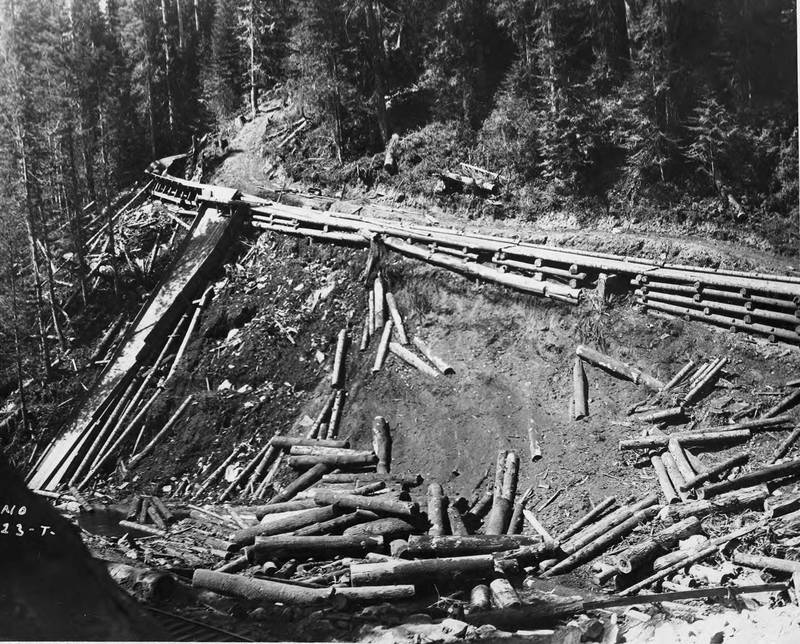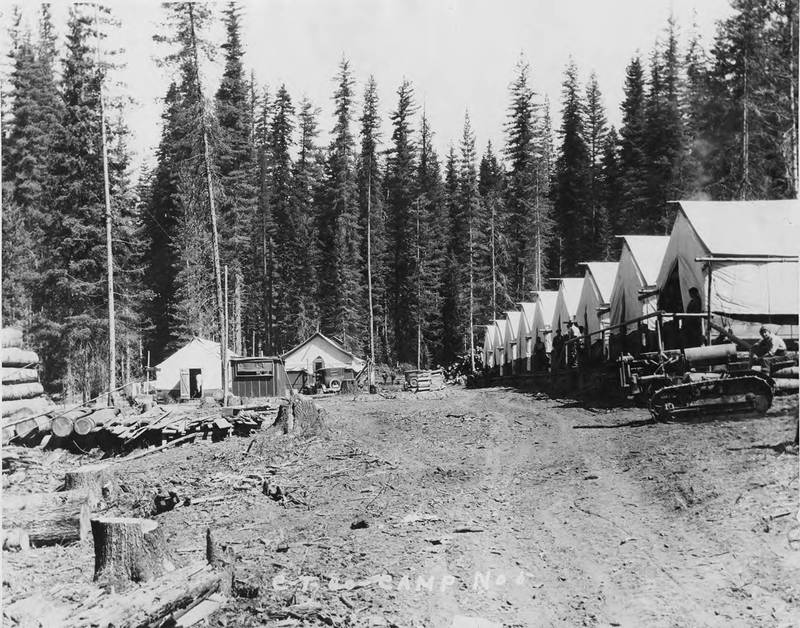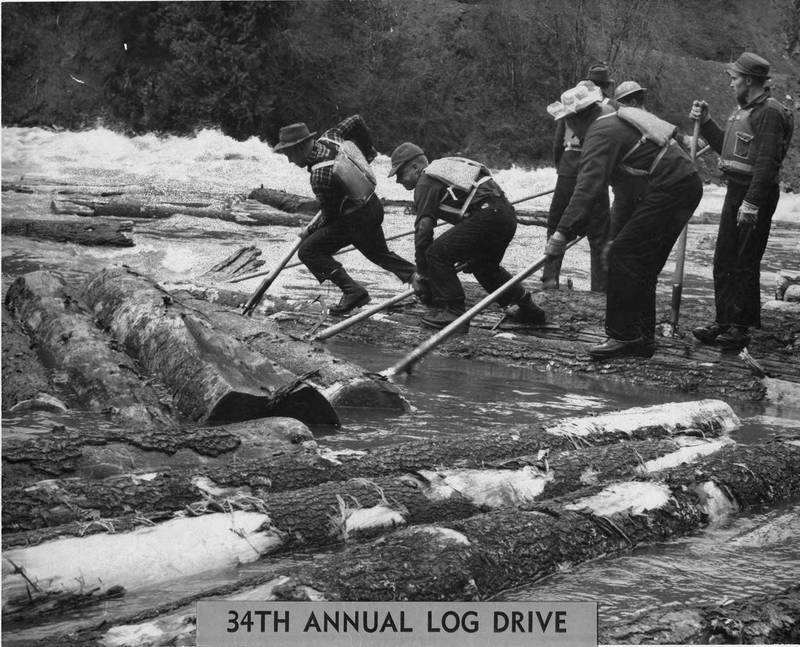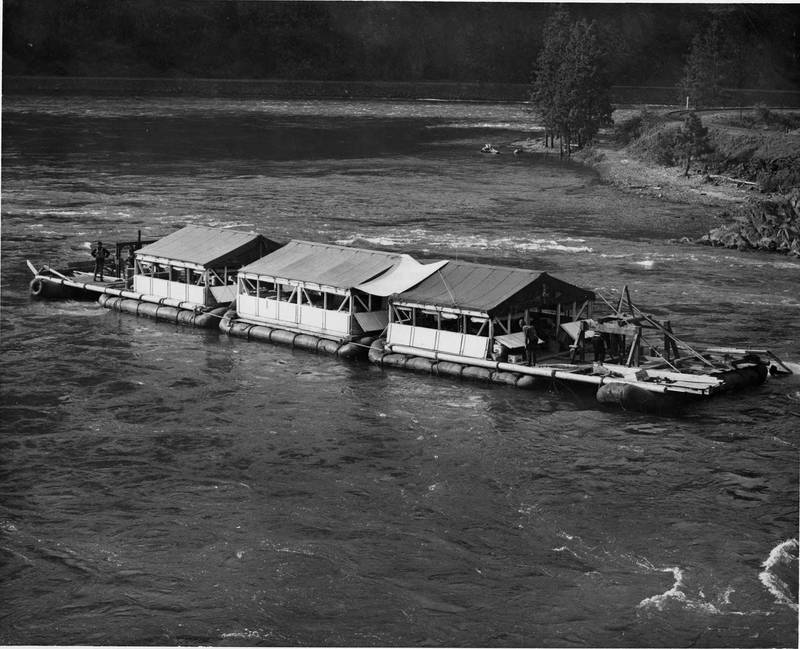Soaked Timber in Idaho's Clearwater River

Between 1900 and 1930, half of all men in northern Idaho and eastern Washington were employed in the lumber industry, outranking all other product manufacturing during that time. Without safer, modernized technology such as log-loaders, eastern businessmen and timberland owners, including the famous Frederick Weyerhaeuser, were forced to rely on waterways to transport lumber. The process of transporting logs downriver, known as river log-driving, was prevalent on the Clearwater River in north central Idaho before becoming obsolete in 1971.
Lumber companies in the Inland Empire (interior Pacific Northwest) competed for ownership of waterways. One such company, the Clearwater Timber Company (merged with the Pine Tree Lumber Company in 1903 to become the Potlatch Timber Company), gained possession of lands around the Clearwater River, and proceeded to dot the river with small lumber camps at the turn of the century. Composed of about twenty to forty men each, these camps oversaw the cutting and transporting lumber downriver toward mills in towns such as Lewiston and Ahsahka, Idaho. Prior to the drives, loggers built guiding channels (flumes) to conduct logs to the river, and constructed barriers (booms) to act as makeshift dams for log collection.
William Dyche, a Clearwater logger, recounted an experience with a 1913-1914 log drive in which he was appointed as camp superintendent. Dyche’s camp was placed in the middle of the northern Idaho wilderness, and appointed by a businessman from Minnesota to create a path and guide logs through the water. Given about a week to start the drive, groups of men were appointed tasks such as flume and boom creation or to act as “river-hogs”; guides who literally rode floating lumber. Loggers constructed about a quarter mile of flume daily while others fell timber in preparation for the drive. While many workers were inexperienced and paid inadequately, only two lumbermen left, one because of injury. Logs were rolled down flumes and guided in the river by “hogs,” who donned spiked boots for traction and carried poles called peavies designed to direct lumber in the water. Periodically, lumber camps located along the same stretch of river would make the mistake of sending logs downriver simultaneously, resulting in severe jams. The Forest Service was heavily involved in the industry, and because of this, tons of dynamite delivered by the USFS were used to clear log-jams.
As logging technology developed, practices became relatively safer. The famed Idaho logger, Charles “Red” McCollister, worked on the Clearwater from 1950 to 1971 and later compiled a photo-essay of the last major whitewater log-drive in the United States on the river in 1971. Evident in the photographs are floating camps, called “wanigans.” Instead of making camp on the riverside in regularly freezing temperatures, men shared buoyant rooms, usually heated with a stove. A kitchen drifted alongside the bunkhouses as well, providing three meals a day for loggers. In some situations, though, loggers were forced to resort to past practice, dangerously climbing out of motorboats onto logs in attempts to restore flow or free a jam.
Although the tradition of log-driving is now gone, replaced by practice freer from danger, using the river as a lumber guide was common in a region known for its lumber industry. Without the dangerous occupation, north central Idaho would be without communities like Potlatch. Early in the 20th century, the lumber industry reigned supreme in Idaho. Without it, Idaho’s communities and economy would have suffered a major loss, as logging attracted needy workers and helped to literally build small towns which still exist today.
Images




